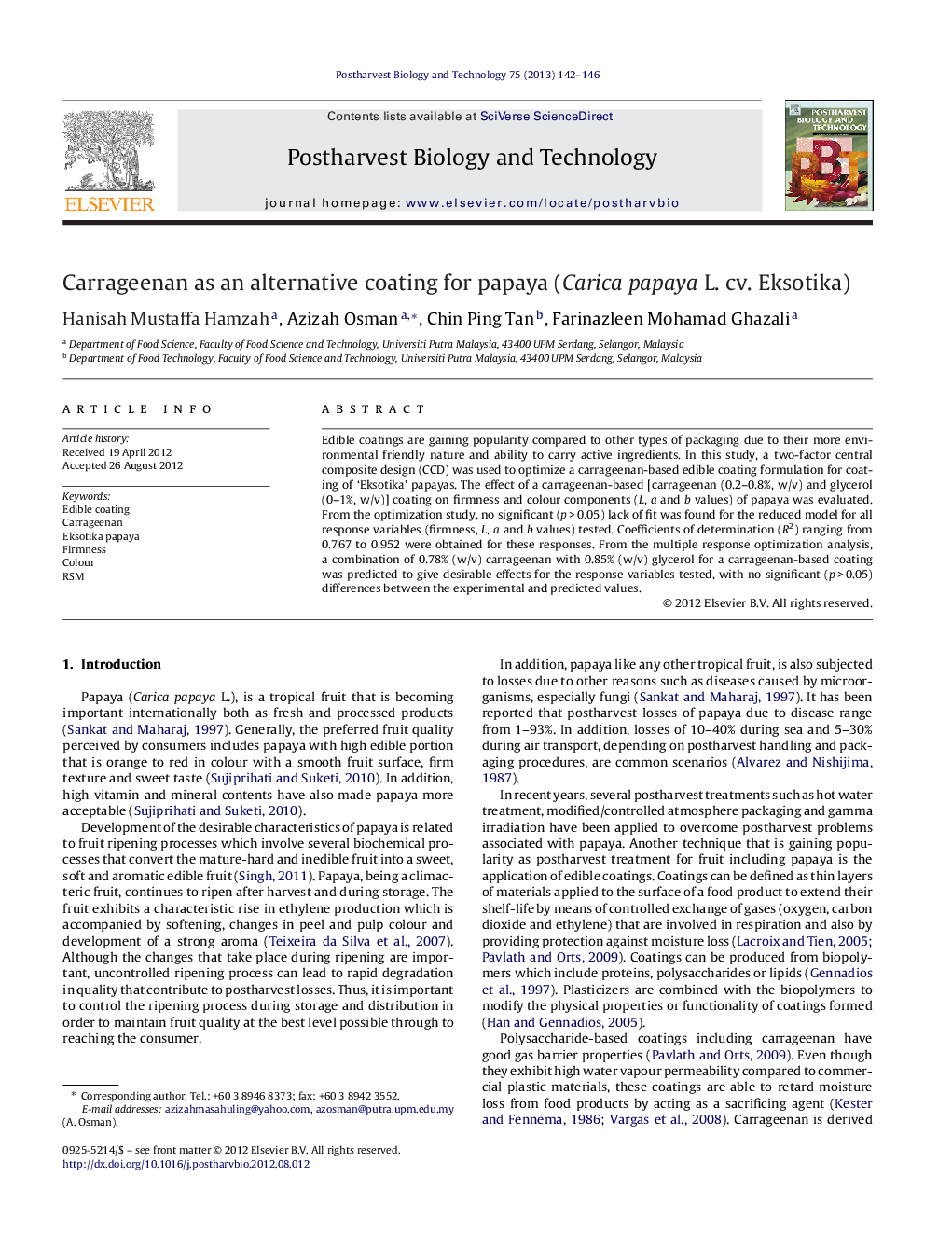| کد مقاله | کد نشریه | سال انتشار | مقاله انگلیسی | نسخه تمام متن |
|---|---|---|---|---|
| 4518651 | 1625019 | 2013 | 5 صفحه PDF | دانلود رایگان |

Edible coatings are gaining popularity compared to other types of packaging due to their more environmental friendly nature and ability to carry active ingredients. In this study, a two-factor central composite design (CCD) was used to optimize a carrageenan-based edible coating formulation for coating of ‘Eksotika’ papayas. The effect of a carrageenan-based [carrageenan (0.2–0.8%, w/v) and glycerol (0–1%, w/v)] coating on firmness and colour components (L, a and b values) of papaya was evaluated. From the optimization study, no significant (p > 0.05) lack of fit was found for the reduced model for all response variables (firmness, L, a and b values) tested. Coefficients of determination (R2) ranging from 0.767 to 0.952 were obtained for these responses. From the multiple response optimization analysis, a combination of 0.78% (w/v) carrageenan with 0.85% (w/v) glycerol for a carrageenan-based coating was predicted to give desirable effects for the response variables tested, with no significant (p > 0.05) differences between the experimental and predicted values.
► Carrageenan-based fruit coatings were developed using response surface methodology.
► Carrageenan and glycerol concentrations were used as independent variables.
► Carrageenan concentrations had a more significant effect on papaya firmness than colour.
► The independent variables gave significant interaction effects on colour components.
Journal: Postharvest Biology and Technology - Volume 75, January 2013, Pages 142–146